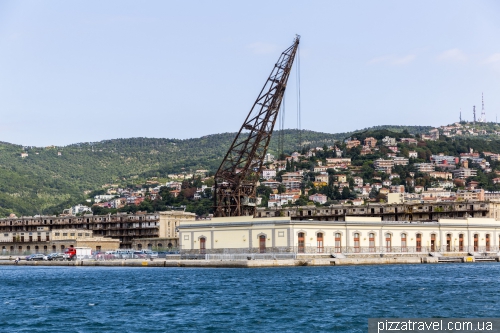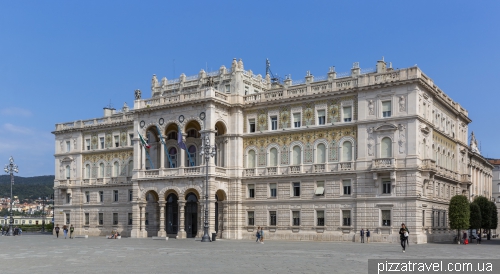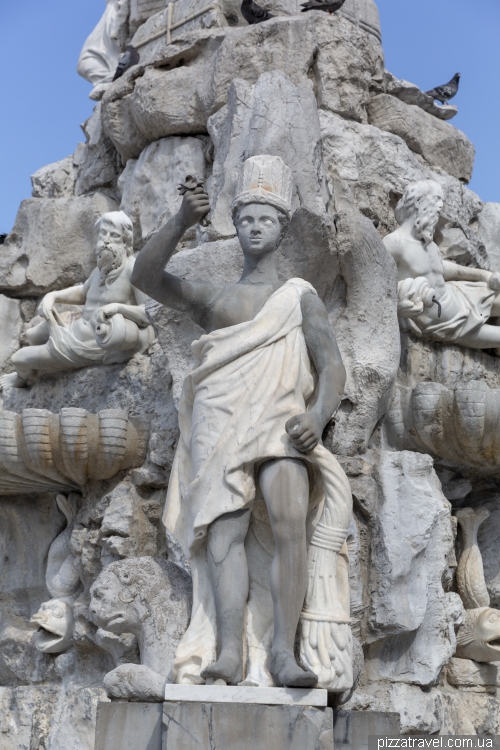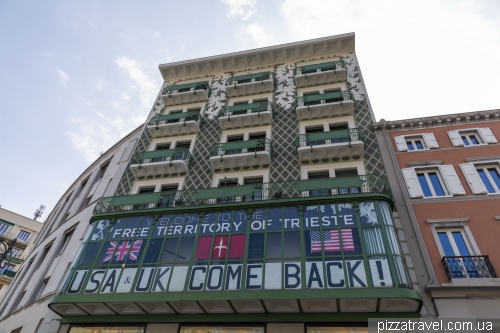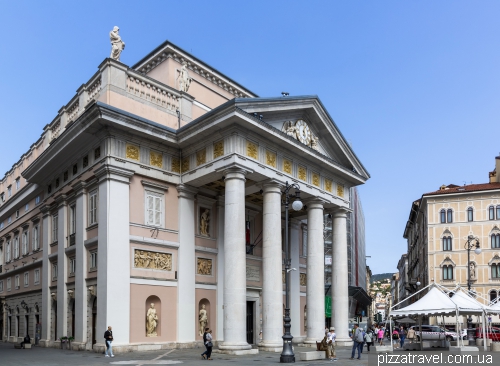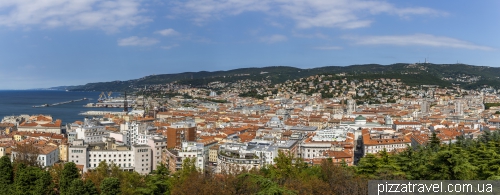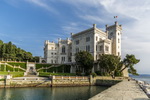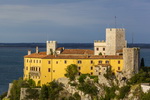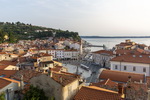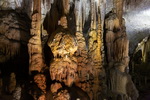Now Trieste is located on the very edge of Italy and tourists rarely come here. The city is similar to Catania or Palermo, almost all access to the sea is blocked by the port, residents of the city and tourists are left with only a kilometer-long strip of asphalt promenade. There are almost no greenery and parks, we felt not comfortable.
We walked along the promenade and pier, looked at the central square of Unity of Italy and went up to the castle of San Giusto. Despite the fact that this is not so much, it’s worth coming here, as there are many interesting places nearby, on the coast, for example the picturesque castles of Miramare and Duino.
The Ursus crane is now a tourist attraction. A kilometer-long strip of shore near it is occupied by some old warehouses. This place is definitely required a reconstruction into a modern residential quarter and public space.
The central square of Unity of Italy impresses with a beautiful architectural ensemble.
The fountain of Four Continents, built in 1750, depicts the continents known at that time.
Around the square you can find many old decorated buildings. This is very silmilar to Genoa, another Italian port city.
The beautiful 18th-century theater-like building is actually the headquarters of the Chamber of Commerce and Industry of Trieste.
The rise to the castle is perhaps the most interesting part of the city. It is better to use a map on your smartphone not to get lost in the small streets. On the way we came across an ancient amphitheater (I-II century AD).
San Giusto Castle was built over 2 centuries, started in the 15th century by Frederick III, Holy Roman Emperor. Near the castle you can also see the ancient Roman remains.
One of the few green areas of the city.
There is nothing special to do inside, but the observation deck is good.
Getting there: large paid parking in the center N 45 39.246 E 13 46.167. The Trieste C.le train station is located almost in the city center.



